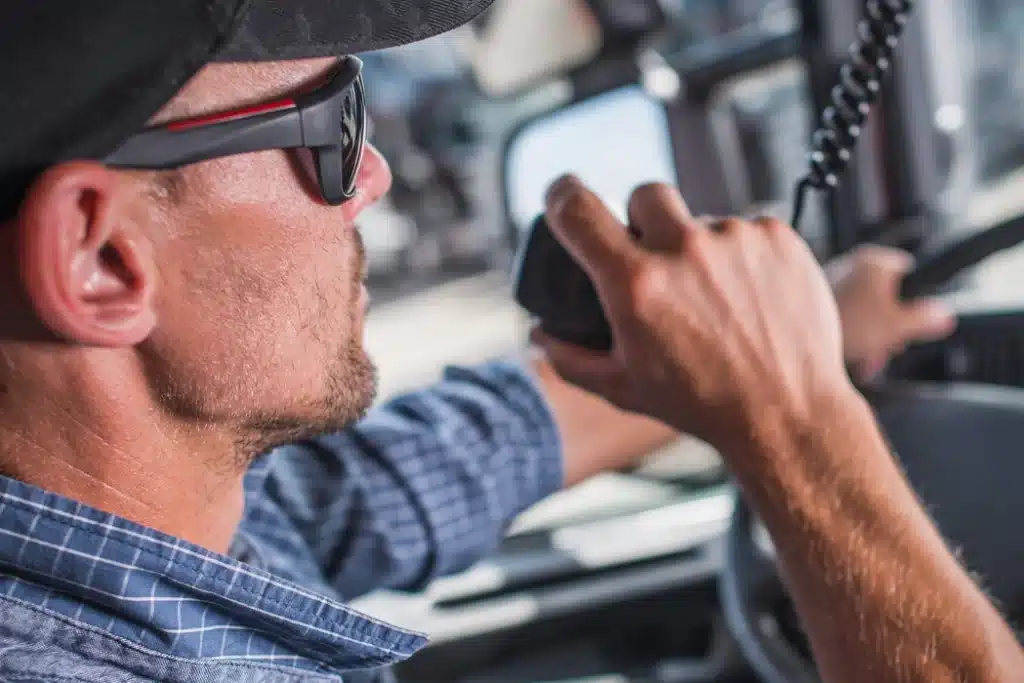GPS tracking devices have revolutionized the way we keep track of things. Whether you’re an individual who wants to keep track of your vehicles, pets, or loved ones, or a business owner who wants to monitor their fleet, these tracing solutions provide an easy and effective way to stay on top of things.
But have you ever stopped to wonder how these tiny devices are able to accurately pinpoint their location anywhere in the world? How do they work, and what makes them so accurate?
In this comprehensive guide, we will explore the fascinating technology behind GPS tracking devices. We’ll delve into the science of GPS and explain how the devices work. We’ll also examine the different types of global positioning system trackers available, how they differ from one another, and what to consider when selecting the right device for your needs.
An Overview of GPS Technology
First, let’s start with the basics: what is GPS, and how does it work? GPS stands for Global Positioning System, and it is a network of satellites that orbit the Earth. These satellites transmit signals that can be picked up by GPS receivers on the ground. By analyzing these signals, GPS receivers can determine their exact location, as well as their altitude, speed, and direction of travel.
So, how do global positioning system trackers use this information? Essentially, a GPS tracking device is a small electronic device that receives GPS signals and uses them to determine its own location. The device then sends this information to a central server, which can be accessed via a web interface or a mobile app.
There are two main types of GPS tracking devices: passive and active. Passive devices simply store location data, which can be downloaded and analyzed later. Active devices, on the other hand, transmit location data in real-time, allowing you to track the device’s location in real-time.
GPS tracking devices come in all shapes and sizes, from small keychain-sized devices to larger units that can be installed in vehicles or machinery. Some devices are designed to be attached to pets or people, while others are intended for use in vehicles or on shipping containers.
One of the main advantages of global positioning system trackers is their accuracy. GPS technology is incredibly precise, with the ability to pinpoint a location within a few meters. This makes GPS tracking devices ideal for a wide range of applications, from monitoring the movements of a vehicle to tracking the location of a lost pet.
GPS Technology Basics
GPS technology is based on a network of 24 satellites orbiting the Earth. The satellites are owned and operated by the United States government and are known as the GPS constellation. The satellites are evenly distributed in six orbits around the Earth and are positioned approximately 12,000 miles above the planet’s surface.
Each GPS satellite transmits signals that contain timing and positioning information. The signals are transmitted at a specific frequency and are spread over a wide range of frequencies, allowing GPS receivers to pick up the signals from the satellites even in areas with high levels of interference.
How GPS Satellites Work
Each GPS satellite is equipped with a highly accurate atomic clock, which is synchronized with clocks on other GPS satellites. The satellite uses these clocks to time-stamp the signals it transmits. The signals include information about the satellite’s position and the time the signal was transmitted.
GPS receivers on the ground pick up the signals from the satellites and use the timing information to calculate the distance between the receiver and each satellite. The GPS receiver then uses a process called trilateration to determine its position on the ground.
Trilateration involves measuring the distance from the receiver to at least three GPS satellites. The receiver then uses this information to calculate its position using mathematical equations that take into account the speed of light and the time it takes for the signal to travel from the satellite to the receiver.
The more GPS satellites that are in view of the receiver, the more accurate the receiver’s position calculation will be. GPS receivers can typically calculate their position with an accuracy of between 5 to 15 meters, depending on the quality of the receiver and the number of satellites in view.
GPS Technology in GPS Tracking Devices
Global positioning system trackers use GPS technology to determine their location and transmit location data to a central server or a mobile device. GPS tracking devices typically consist of three main components: the GPS receiver, the antenna, and the data transmission module.
The GPS receiver in a GPS tracking device works in the same way as a regular GPS receiver, receiving signals from GPS satellites and calculating the device’s location. The antenna is used to pick up the GPS signals and improve the device’s reception. The data transmission module is used to send the device’s location data to a central server or a mobile device.
GPS tracking devices can be passive or active. Passive GPS tracking devices simply store location data, which can be downloaded and analyzed later. Active GPS tracking devices, on the other hand, transmit location data in real-time, allowing you to track the device’s location in real-time.
Benefits of GPS Technology in GPS Tracking Devices
GPS tracking devices provide real-time location tracking and data analysis, enabling individuals and businesses to stay on top of their assets.
They offer numerous benefits, including:
- Accurate location tracking: GPS technology provides precise location information, allowing you to track the location of a GPS tracking device with a high degree of accuracy.
- Real-time location data: Active global positioning system trackers provide real-time location data, enabling you to monitor the movements of a person or vehicle in real-time.
- Improved safety: GPS tracking devices can improve safety by allowing you to track the location of people, vehicles, and assets in real-time.
- Increased efficiency: Global positioning system trackers can increase efficiency by providing real-time information about the location and status of vehicles, assets, and personnel. This information can be used to optimize routes, manage resources, and improve productivity. For example, a delivery company can use these devices to monitor the location of their delivery trucks and optimize routes to reduce travel time and fuel consumption. An organization can use GPS tracking devices to monitor the location of their employees and assign tasks based on their proximity to job sites.
In addition to these benefits, GPS tracking devices can also be used to improve customer service by providing accurate and timely information about the location of products or services. For example, a transportation company can use global positioning system trackers to provide real-time updates to customers about the location and expected arrival time of their shipments.
GPS technology is an essential tool in our daily lives, providing precise location and navigation information to millions of people around the world. GPS tracking devices use GPS technology to determine their location and transmit location data to a central server or a mobile device. They offer numerous benefits, including accurate location tracking, real-time location data, improved safety, and increased efficiency.
As technology continues to evolve, we can expect GPS tracking devices to become even more sophisticated and provide even more benefits to individuals and businesses alike.
Components of a GPS Tracking Device
Global positioning system trackers use GPS technology to determine their location and transmit location data to a central server or a mobile device. GPS tracking devices typically consist of several components that work together to provide accurate location data. In this section, we will explain the components of a GPS tracking device and how they work together to provide accurate location data.
I. GPS Receiver
The GPS receiver is the most important component of a GPS tracking device. It is responsible for picking up signals from GPS satellites and calculating the device’s location. The GPS receiver in a GPS tracking device works in the same way as a regular GPS receiver, receiving signals from GPS satellites and calculating the device’s location.
The GPS receiver in a GPS tracking device uses a process called trilateration to determine its position on the ground. Trilateration involves measuring the distance from the receiver to at least three GPS satellites. The receiver then uses this information to calculate its position using mathematical equations that take into account the speed of light and the time it takes for the signal to travel from the satellite to the receiver.
The more GPS satellites that are in view of the receiver, the more accurate the receiver’s position calculation will be. GPS receivers can typically calculate their position with an accuracy of between 5 to 15 meters, depending on the quality of the receiver and the number of satellites in view.
II. Cellular Modem
The cellular modem is another important component of a GPS tracking device. It is responsible for transmitting location data from the device to a central server or a mobile device. GPS tracking devices typically use cellular networks to transmit location data.
The cellular modem in a GPS tracking device works by connecting to a cellular network and transmitting data using cellular technology. The modem in a GPS tracking device can be used to transmit data in real-time or store the data locally on the device for later retrieval.
III. Antenna
The antenna is a critical component of a GPS tracking device that is responsible for picking up GPS signals and improving the device’s reception. GPS signals can be weak or easily obstructed, so having a good antenna is essential for accurate location tracking.
The antenna in a GPS tracking device is designed to pick up signals from GPS satellites and improve the device’s reception. There are several types of antennas used in GPS tracking devices, including patch antennas, helical antennas, and ceramic antennas.
Patch antennas are the most common type of antenna used in GPS tracking devices. They are flat and square in shape and are usually mounted on the top of the device. Patch antennas are designed to pick up signals from GPS satellites that are directly overhead.
Helical antennas are another type of antenna used in global positioning system trackers. They are shaped like a coil and are used to pick up GPS signals that are at an angle to the device.
Ceramic antennas are the smallest and most compact type of antenna used in GPS tracking devices. They are often used in small, portable devices and provide good reception in areas with high levels of interference.
IV. Power Source
The power source is an essential component of a GPS tracking device. It provides the device with the energy it needs to operate and transmit location data. GPS tracking devices can be powered by a variety of sources, including batteries, solar panels, and vehicle power.
Batteries are the most common power source used in GPS tracking devices. They can be easily replaced or recharged and provide enough power to operate the device for several days or even weeks.
Solar panels are another power source that can be used in global positioning system trackers. They are often used in outdoor applications where the device can be exposed to sunlight for extended periods. Solar panels can provide enough power to operate the device indefinitely, as long as there is sufficient sunlight.
Vehicle power is also a common power source used in GPS tracking devices. This type of power source is often used in fleet management applications where the GPS tracking device is installed in a vehicle. The device is powered by the vehicle’s electrical system, ensuring that the device always has enough power to operate.
V. Processor
The processor is responsible for processing data and executing commands on the GPS tracking device. It is essentially the brain of the device and runs the device’s software and processing data from the GPS receiver and cellular modem.
The processor in a GPS tracking device is typically a low-power, energy-efficient processor that is designed to operate for extended periods without requiring a lot of power. The processor is responsible for processing location data, storing data on the device, and executing commands from a remote server.
VI. Memory
Memory is another important component of a GPS tracking device. It stores data and program code on the device. There are two types of memory used in global positioning system trackers: read-only memory (ROM) and random-access memory (RAM).
ROM is a type of memory that is used to store the device’s firmware or program code. This code cannot be modified or erased and is essential for the device to operate. RAM, on the other hand, is used to store data and program code that can be modified or erased. RAM is typically volatile, meaning that it requires power to maintain its contents.
VII. Sensors
Some GPS tracking devices may also include sensors that can detect and report other types of data, such as temperature, humidity, and vibration. These sensors can be used in a variety of applications, such as monitoring the condition of goods during transport or tracking the usage of heavy equipment.
The sensors in a GPS tracking device are typically low-power sensors that are designed to operate for extended periods without requiring a lot of power. They are usually connected to the device’s processor and can be configured to report data at specific intervals or when certain conditions are met.
How GPS Tracking Devices Determine Location
In this section, we will delve into the intricacies of how global positioning system trackers determine location using GPS technology. We will explore the various techniques employed by GPS tracking devices to pinpoint the location of assets and discuss the impact of external factors such as atmospheric conditions and obstacles on the accuracy of location data.
By understanding the science behind GPS tracking devices, businesses can make informed decisions about the effective use of this technology to enhance their operations.
I. Triangulation
These devices determine their location using a process called triangulation. Triangulation involves measuring the distance between the GPS tracking device and at least three GPS satellites. The distance is calculated using the time it takes for the GPS signals to travel from the satellite to the device. Once the distance is calculated, the GPS tracking device can use this information to determine its location.
The accuracy of GPS tracking devices is directly related to the number of GPS satellites the device can connect to. The more GPS satellites the device can connect to, the more accurate its location will be. Most global positioning system trackers can connect to at least three GPS satellites, which is enough to provide an accurate location reading.
II. Factors Affecting Location Accuracy
While GPS technology is a highly accurate way to determine location, there are several factors that can impact its accuracy. These factors include atmospheric conditions, obstacles, and the quality of the GPS tracking device itself.
Atmospheric conditions can impact the accuracy of GPS tracking devices by slowing down the GPS signals as they travel through the Earth’s atmosphere. This can cause errors in the distance calculations and result in inaccurate location readings. The two primary atmospheric conditions that can impact GPS accuracy are ionospheric delay and tropospheric delay.
Ionospheric delay is caused by the Earth’s ionosphere, which is a layer of charged particles that surrounds the planet. The ionosphere can cause GPS signals to slow down as they travel through it, resulting in distance measurement errors and inaccurate location readings.
Tropospheric delay is caused by the Earth’s troposphere, which is the lowest layer of the Earth’s atmosphere. The troposphere can cause GPS signals to slow down as they travel through it, resulting in distance measurement errors and inaccurate location readings.
Obstacles can also impact the accuracy of global positioning system trackers by blocking GPS signals or reflecting them in a way that causes errors in the distance calculations. Obstacles can include buildings, trees, and other structures that can interfere with the GPS signals.
The quality of the GPS tracking device itself can also impact its accuracy. Cheaper GPS tracking devices may not have the same level of accuracy as more expensive devices, and may not be able to connect to as many GPS satellites. Additionally, the GPS receiver in the device may not be as sensitive, resulting in weaker signals and less accurate location readings.
III. Augmentation Systems
To improve the accuracy of global positioning system trackers, several augmentation systems have been developed that provide additional information to the GPS tracking device. These systems include the Wide Area Augmentation System (WAAS), the European Geostationary Navigation Overlay Service (EGNOS), and the Global Navigation Satellite System (GLONASS).
WAAS is a system developed by the Federal Aviation Administration (FAA) that provides GPS correction data to improve the accuracy of GPS readings. EGNOS is a similar system developed by the European Space Agency (ESA) that provides GPS correction data to improve the accuracy of GPS readings in Europe. GLONASS is a Russian navigation system that provides additional GPS signals that can be used to improve the accuracy of GPS readings.
Types of GPS Tracking Devices
These tracking devices have become an indispensable tool for businesses across a wide range of industries, providing accurate location data that can be used to optimize operations, reduce costs, and improve overall efficiency.
In this section, we will take a deep dive into the world of GPS tracking devices, exploring the different types available and their unique applications. We will discuss the differences between real-time tracking devices, data loggers, OBD-II devices, asset trackers, personal trackers, and pet trackers. By understanding the capabilities of each type of GPS tracking device, businesses can make informed decisions about the type of device that is best suited to their needs, and leverage this technology to gain a competitive advantage in their industry.
I. Real-Time Tracking Devices
Real-time tracking devices are global positioning system trackers that provide real-time location data. These devices transmit location data to a central server or a mobile device in real-time, allowing the user to track the location of the device in real-time.
Real-time tracking devices are ideal for applications where it is essential to have up-to-the-minute location data. These devices are commonly used in fleet management applications to monitor the location of vehicles and assets in real-time. Real-time tracking devices are also commonly used in personal tracking applications, such as tracking the location of children or elderly individuals.
II. Data Loggers
Data loggers are GPS tracking devices that store location data locally on the device. These devices are designed to be retrieved later and provide historical location data. Data loggers typically store location data on a memory card or onboard memory and can be retrieved by connecting the device to a computer.
Data loggers are ideal for applications where it is not essential to have real-time location data but where historical location data is required. These devices are commonly used in wildlife research applications to track the movement of animals over an extended period. Data loggers are also commonly used in logistics applications to track the movement of goods over an extended period.
III. OBD-II Devices
OBD-II devices are global positioning system trackers that are designed to be plugged into the onboard diagnostic (OBD-II) port of a vehicle. These devices can provide real-time location data as well as diagnostic data from the vehicle’s onboard computer.
OBD-II devices are ideal for fleet management applications where it is necessary to monitor the location of vehicles and monitor vehicle health. These devices can provide real-time location data as well as data on vehicle speed, fuel consumption, and engine performance. OBD-II devices can be used to optimize routes, manage fuel consumption, and reduce vehicle maintenance costs.
IV. Asset Trackers
Asset trackers are global positioning system trackers that are designed to be attached to assets such as containers, trailers, and equipment. These devices provide real-time location data and can be configured to provide alerts when the asset moves outside of a predefined area.
Asset trackers are ideal for logistics and supply chain applications where it is necessary to track the movement of goods and equipment. These devices can provide real-time location data and can be used to optimize routes, reduce theft, and improve supply chain visibility.
V. Personal Trackers
Personal trackers are GPS tracking devices that are designed to be worn by individuals. These devices provide real-time location data and can be configured to provide alerts when the wearer moves outside of a predefined area.
Personal trackers are ideal for applications where it is necessary to track the location of individuals, such as children or elderly individuals. These devices can provide peace of mind to caregivers and family members by allowing them to monitor the location of their loved ones in real-time.
VI. Pet Trackers
Pet trackers are GPS tracking devices that are designed to be attached to a pet’s collar. These devices provide real-time location data and can be configured to provide alerts when the pet moves outside of a predefined area.
Pet trackers are ideal for pet owners who want to ensure the safety of their pets. These devices can provide peace of mind by allowing pet owners to monitor the location of their pets in real-time.
By understanding the different types of global positioning system trackers available and their respective applications, individuals and businesses can make informed decisions about the type of GPS tracking device that is best suited for their needs.
Applications of GPS Tracking Devices
These tracking solutions have become a game-changer for businesses in a wide range of industries. In this section, we will explore the numerous applications of GPS tracking devices in industries such as transportation, logistics, and construction.
We will delve into the specific ways businesses have successfully implemented GPS tracking solutions to improve their operations, such as optimizing routes, reducing fuel consumption, and improving delivery times.
By highlighting real-world examples of how businesses have leveraged GPS tracking technology to achieve tangible benefits, we aim to demonstrate the immense potential of this technology and inspire businesses to consider implementing it in their operations.
I. Transportation Industry
The transportation industry is one of the primary beneficiaries of GPS tracking devices. GPS tracking devices can be used to monitor the location of vehicles and optimize routes, resulting in reduced fuel consumption and increased efficiency.
In the trucking industry, GPS tracking devices are commonly used to monitor the location of vehicles and ensure that drivers are following prescribed routes. This can help reduce fuel consumption and improve delivery times. Global positioning system trackers can also be used to optimize routes and reduce idle time, resulting in further fuel savings.
In the public transportation industry, GPS tracking devices are used to provide real-time information on the location of buses and trains. This information can be used to improve scheduling and reduce wait times for passengers.
II. Logistics Industry
The logistics industry is another industry that has benefited greatly from GPS tracking devices, which can be used to monitor the movement of goods and optimize supply chain operations.
In the warehousing industry, these devices can be used to monitor the movement of goods and optimize inventory management. This can help reduce inventory costs and improve order fulfillment times.
In the delivery industry, global positioning system trackers are commonly used to monitor the movement of goods and optimize delivery routes. This can help reduce delivery times and improve customer satisfaction.
III. Construction Industry
The construction industry is another industry that has successfully implemented GPS tracking devices to improve operations, including monitoring the location of heavy equipment and improve construction site safety.
In the excavation industry, global positioning system trackers can be used to monitor the location of excavators and ensure that they are being used in a safe and efficient manner. This can help reduce the risk of accidents and improve overall efficiency.
In the construction industry, GPS tracking devices can be used to monitor the movement of heavy equipment and optimize site layout. This can help reduce fuel consumption and improve overall efficiency.
Best Practices for Using GPS Tracking Devices
To truly harness the power of this technology, it is essential to use global positioning system trackers effectively. In this section, we will explore the key tips and best practices for using GPS tracking devices to their full potential.
From setting performance metrics and integrating with other systems to training employees and monitoring data, we will provide practical advice on how to get the most out of GPS tracking devices.
By following these best practices, businesses can improve their operations, reduce costs, and enhance overall efficiency, all while staying ahead of the competition.
I. Set Performance Metrics
One of the most important steps in using GPS tracking devices effectively is to set performance metrics. Performance metrics are measurable indicators of how well a business is meeting its objectives. By setting performance metrics, businesses can monitor the effectiveness of their global positioning system trackers and make adjustments as necessary.
Some common performance metrics include fuel consumption, idle time, and delivery times. By setting performance metrics for these areas, businesses can monitor the performance of their vehicles and make adjustments to optimize efficiency.
II. Integrate with Other Systems
Another best practice for using global positioning system trackers effectively is to integrate them with other systems. These devices can provide valuable data that can be used to improve other areas of a business, such as inventory management and order fulfillment.
By integrating GPS tracking devices with other systems, businesses can gain a more comprehensive view of their operations and identify areas for improvement. For example, GPS tracking data can be used to optimize inventory management by providing real-time information on the location of goods. This can help reduce inventory costs and improve order fulfillment times.
III. Train Employees
GPS tracking devices are only effective if they are used properly. It is important to train employees on how to use global positioning system trackers effectively and how to interpret the data they provide.
Training should cover topics such as how to use the GPS tracking device, how to read and interpret the data it provides, and how to use the data to make improvements in operations. By training employees on how to use global positioning system trackers effectively, businesses can ensure that they are getting the most out of their investment in this technology.
IV. Monitor and Analyze Data
Another best practice for using GPS tracking devices effectively is to monitor and analyze the data they provide. This involves regularly reviewing GPS tracking data and using it to identify trends and areas for improvement.
Data analysis can be used to identify areas where vehicles are using too much fuel, where idle times are too long, and where delivery times are longer than they should be. By analyzing this data, businesses can identify areas for improvement and make adjustments to optimize operations.
V. Communicate Results
Finally, it is important to communicate the results of GPS tracking data to relevant stakeholders. This includes managers, employees, and customers.
By communicating the results of GPS tracking data, businesses can demonstrate their commitment to improving operations and provide transparency to stakeholders. For example, if a business has reduced fuel consumption by a certain percentage, this information can be communicated to employees to demonstrate the impact of their efforts.
Conclusion
In this article, we have discussed the basics of GPS technology and how GPS tracking devices work. We have explored the components and how they work together to provide accurate location data. We have also discussed the different types of devices available and their respective applications, as well as how they can be implemented across a number of industries to improve their operations.
Furthermore, we have provided tips and best practices for using global positioning system trackers effectively, such as setting performance metrics, integrating with other systems, training employees, monitoring and analyzing data, and communicating results. By following these best practices, businesses can optimize their operations, reduce costs, and improve overall efficiency.
We encourage businesses to consider implementing these devices to improve their operations and seek expert guidance to ensure effective usage. As GPS technology continues to evolve, we can expect GPS tracking devices to become even more sophisticated and provide even more benefits to businesses.
Ready to learn more about how tracking devices work and how they can benefit your business? Contact us today to speak with one of our experts and find the perfect tracking device solution for your needs. Our team will guide you through the process, answer any questions you may have, and provide you with a personalized solution to improve your operations. Don’t wait any longer, schedule a consultation now and discover the power of tracking devices for your business.







































